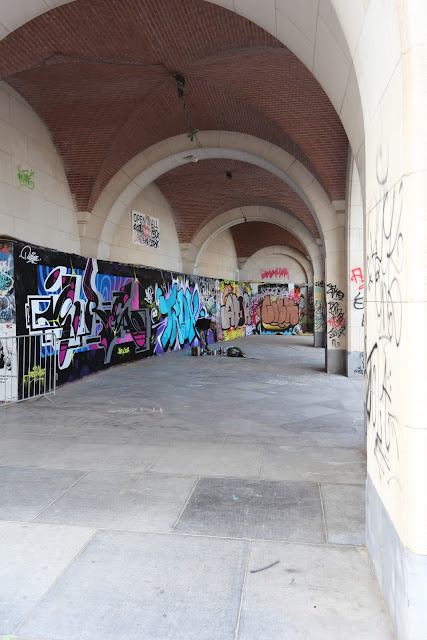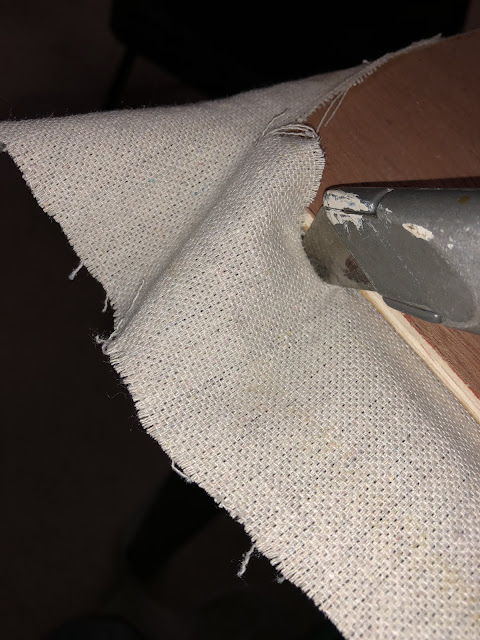I could hear the oink oink from the Earth Pig in the distance, if I try hard enough. Again I am faced with the proverbial question, what is this pig going to look like.
Artists in general are some of the most dichotomous beings on earth, I think. We have to be sufficiently opinionated in order to put forth our ideas, yet vulnerable enough to reveal our innermost secrets. We can't wait to make a statement and yet are ambivalent about the reception. Of course there is this camp that insists we should have the fortitude to paint whatever we want and in whatever manner, and it is up to the viewer to understand and appreciate our works. I am sure we can scream and demand and insist, but deep down inside we muse and second guess and long for acceptance. Rejection is a bitter pill to swallow. Perhaps discontent, and the appetite for vindication, more than anything else, are the real fabric for creativity. This might sound like an oxymoron but Johnny Carson once said that he is ill at ease at parties. He would hide behind a curtain if he could. I believe artists, and people who claim to be artists, are good at fulfilling a role; as Johnny did. Within the confines of the prescribed role we find courage and confidence. Outside of the pan, all bets are off.
I believe it is this insecurity that drives us to be control freaks.... sort of; and it is this fear of rejection that plants a deep seed in us, driving us to constantly compose and morph and reveal, always searching.
It is my assertion that creative people are people who can't stand status quo. Creative people are not satisfied with the real world. There is the omnipresent urge to alter the perception of what is real.
Why is there a need to paint a sunset ? Isn't the sunset one of those perfect moments that the Creator forged? To pose a gliding pelican against the setting yolk, to add a smidgen of crimson to the horizon, or to garnish the sky with lenticular clouds? Creating "new real" from reality, the painter is not satisfied with the real sunset and creates his/her own. The artists are suggesting that we look at matters from their point of view, despite the fact that whatever we perceive is still our own, and not that of the artists' myopia. Yet we artists persevere, trying to change reality as we see it. Molding our own world, our own reality.
Oh to jog our memory, one might say. A photo or a painting or a movie clip is nothing more than a suggestion, a stimulus. Art works are just tools, conduits to call up our own experiences. We still have to form the image from our head, even while we are looking at a physical object. Memory is a state of mind.
What are memories? What are feelings? Chemicals and electrical impulses in our brains. When we look at the brain outside of our bodies, it is all but a blob of cold, damp, soft mass and yet we love, hate, empathize, think, create and invent with it. Yet the topography of our receptor sites and movements of salt ions governed our psyche. With the advence in AI and VR, could we be far from the future when our brains could be mapped and we could customize our experience? We could have a virtual rent a movie or go to th virtual Metropolitan Museum Of Art by tapping our skull with our cell phones!
Of course, when all else fails, there's always the route of chemical augmentation, since the chemical pathway in the brain is well documented. Either the artist, or the audience may partake in this ritual. This is the ultimate alteration! Let's have a rave party. Drug taking behavior seem prevalent for both performing and visual artists (emphasis on the word seem). I wonder if there's an association between using chemicals and creativity. Could this be the magic potion that sublimates what is real, albeit mundane, to something ethereal of our own imagination? Is this how abstracts work? Is this how minimalism works? Berlioz composed the wildly successful Symphonie Fantastique while taking opium drops, albiet for medicinal purpose. Could that have contributed to the genius of the piece, or was it a product of his manic depressive episodes?
A boutique ice cream business here concocted a turkey ice cream by mixing turkey with ice cream. Wow that is going outside of the box. It is now the love of the media and foodies pile on heaps of praises. Can eccentricity and irrationality become celebrated traits given the right spin? I can only imagine the moment when the first person ever decided to see what fermented milk curd tasted like. Because this person dared to go where no one has gone before, we are now blessed with Gorgonzola and Roquefort. How desperate must a person be to drink kopi luwak, a coffee brewed from partially digested coffee beans pooped out by felines. Does exclusivity and being expensive lend credibility?
We are advancing into the field of Artificial Intelligence at a fierce pace. We make robots that can think and feel and emote; just like ourselves. Is this the final frontier for our creative minds? We want to create a copy of ourselves and we want the credit for coding our creations. Recently an AI generated piece of art was auctioned off at Christie for over $400,000. Is that a validation of the image, the programmer, or the person who shelled out that huge sum of money. How about paintings done by animals? Paintings done by elephants and monkeys have been tauted as artworks. If we put aside the fact that these are animal productions, do these "art works" harbor any intrinsic values?
Frankly I believe artists are narcissists, to a more or lesser degree. We go to great lengths to make our views known, no matter how trite or infantile or meaningless. We paint, we perform, we take pictures, sculpt, weave, fire, and in my case, blog. Thank heavens for my soap box.
Please excuse my ranting with my sometimes sacrilegious, often mis-guided, but never nefarious statements. These are actually questions that I ask of myself, and of others and the answers are as many and as varied as grains of sand at the Sahara Desert. And just like the dunes in Sahara, they shift with the winds. I could never get a straight answer.
Such behaviors beg the question, is this narcissism? Are artists narcissists?
Artists are rewarded by putting their names on a piece of work, having their brand appear in trade magazines, gallery catalogues and museum brochures. After all this is what the society deem as a proof of success, affirming the talents and efforts of said artists and bestow upon them a decorum of validations, sometimes tethered to a ridiculously huge sum of moola. Often times when these "proper" channels are not available, the creative mind still seek identity and glory by graffiti. This is perhaps the most spontaneous, self-gratifying kind of self-expression.
I chanced upon a synagogue which walls are tagged with graffiti. No I am not talking about railroad cars or grain silos.
Is this a creative mind? Narcissistic behavior? Or plain insolence? Is this art? What is art? What if these were done by Salvador Dali, would his fame change the perception of graffiti?
Time to step down from my rostrum and get on with my pigs.
First I must study them...... get the nuance of the animal....I can't remember ever painting a pig!
Sketch away!
oink oink oink

























































